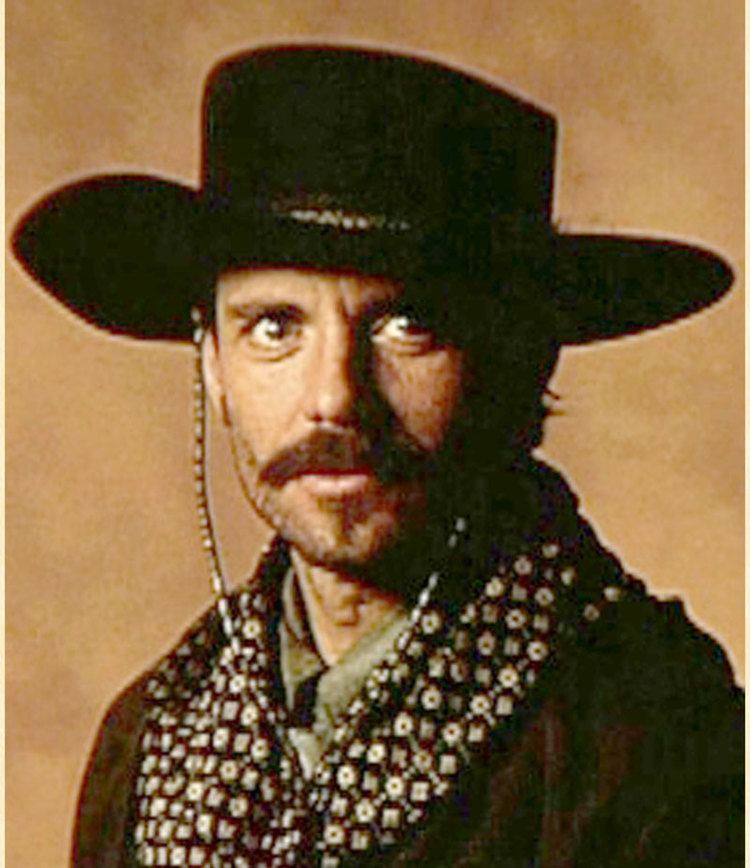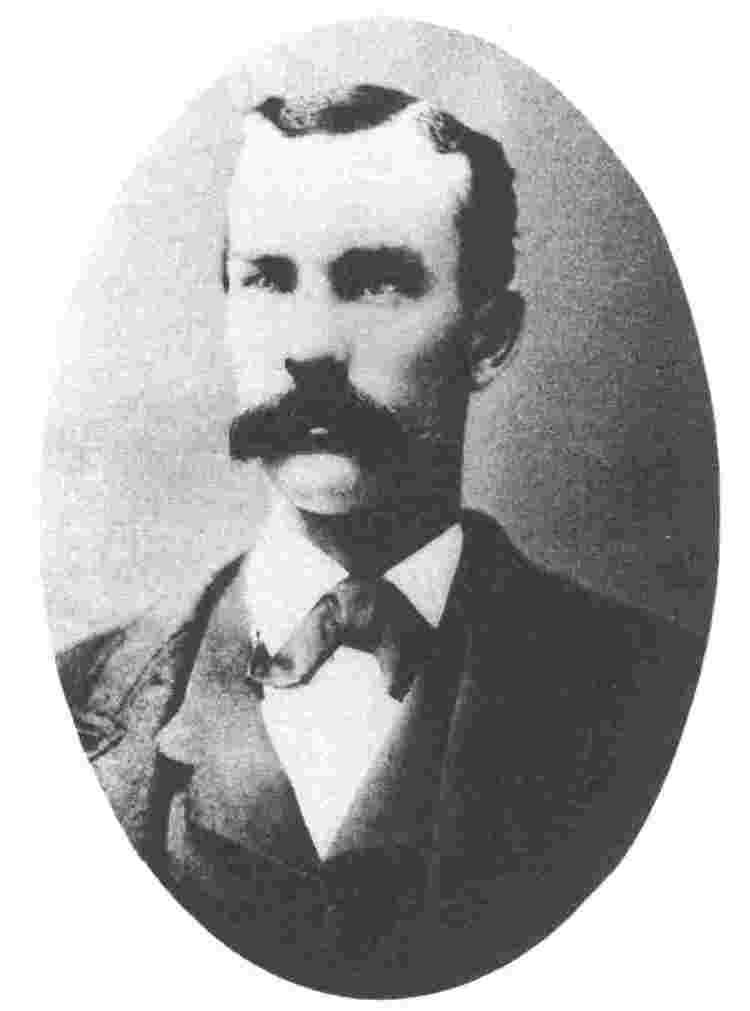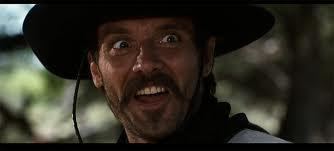Occupation Outlaw | Years active 1875–1882 Name Johnny Ringo | |
 | ||
Born May 3, 1850 ( 1850-05-03 ) Greensfork, Indiana Cause of death Gunshot wound to the head Resting place West Turkey Creek Valley31°51′54.4″N 109°25′07.2″W / 31.865111°N 109.418667°W / 31.865111; -109.418667 Other names Johnny Ringo, Johnny Ringgold Parents Mary Peters Ringo, Martin Ringo Similar People | ||
Body discovered Turkey Creek Canyon | ||
Johnny Ringo
John Peters Ringo (May 3, 1850 – July 13, 1882)—known as Johnny Ringo—was a known associate of the loosely federated group of outlaw Cochise County Cowboys in frontier Tombstone, Cochise County, Arizona Territory, United States. He was affiliated with Cochise County Sheriff Johnny Behan, Ike Clanton, and Frank Stilwell during 1881–1882.
Contents
- Johnny Ringo
- Stories of the century johnny ringo full length episode
- Early life
- Mason County War
- Life in Tombstone
- Confrontation with Doc Holliday
- Joins posse pursuing Earps
- Theories of Ringos death
- Wyatt Earp theory
- Doc Holliday theory
- Michael ORourke theory
- Frank Leslie theory
- Film and television
- In music
- In literature
- References
Stories of the century johnny ringo full length episode
Early life

Johnny Ringo was born in Greens Fork, Indiana, of distant Dutch ancestry. His family moved to Liberty, Missouri in 1856. He was a contemporary of Frank and Jesse James, who lived nearby in Kearney, Missouri, and became a cousin of the Younger brothers through marriage when his aunt Augusta Peters Inskip married Coleman P. Younger, uncle of the outlaws.

In 1858, the family moved to Gallatin, Missouri where they rented property from the father of John W. Sheets (who became the first "official" victim of the James-Younger gang when they robbed the Daviess County Savings & Loan Association in 1869).

On July 30, 1864, his family was in Wyoming en route to California. Johnny's father Martin Ringo stepped out of their wagon holding a shotgun, which accidentally discharged, killing him. The buckshot entered the right side of Martin's face and exited the top of his head. Fourteen-year-old Johnny and his family buried Martin on a hillside alongside the trail.
Mason County War
By the mid-1870s, Ringo had migrated from San Jose, California, to Mason County, Texas. Here he befriended an ex-Texas Ranger named Scott Cooley, who was the adopted son of a local rancher named Tim Williamson.
Trouble started when two American rustlers, Elijah and Pete Backus, were dragged from the Mason jail and lynched by a predominantly German mob. Full-blown war began on May 13, 1875, when Tim Williamson was arrested by a hostile posse and murdered by a German farmer named Peter Bader. Cooley and his friends, including Johnny Ringo, conducted a terror campaign against their rivals. Officially called it the "Mason County War"; locally it was called the "Hoodoo War". Cooley retaliated by killing the local German ex-deputy sheriff, John Worley, shooting him, scalping him, and tossing his body down a well on August 10, 1875.
Cooley already had a reputation as a dangerous man, and was respected as a Texas Ranger. He killed several others during the "war". After Cooley supporter Moses Baird was killed, Ringo committed his first murder on September 25, 1875, when he and a friend named Bill Williams rode up in front of the house of James Cheyney, the man who led Baird into the ambush. Cheyney came out unarmed, invited them in, and began washing his face on the porch, when both Ringo and Williams shot and killed him. The two then rode to the house of Dave Doole and called him outside, but he came out with a gun so they fled back into town.
Some time later, Scott Cooley and Johnny Ringo mistook Charley Bader for his brother Pete and killed him. After that, both men were jailed in Burnet, Texas by Sheriff A. J. Strickland. Both Ringo and Cooley were broken out of jail by their friends shortly thereafter, and parted company to evade the law.
By November 1876, the Mason County War had petered out after costing a dozen or so lives, Scott Cooley was believed dead, and Johnny Ringo and his pal George Gladden were locked up once again. One of Ringo's alleged cellmates was the notorious killer John Wesley Hardin. While Gladden was sentenced to 99 years, Ringo appears to have been acquitted. Two years later, Ringo was noted as being a constable in Loyal Valley, Texas. Soon after this, he appeared in Arizona for the first time.
Life in Tombstone
Ringo first appeared in Cochise County, Arizona Territory in 1879 with Joseph Graves Olney (alias "Joe Hill"), a friend from the Mason County War. In December 1879, a drunk Ringo shot unarmed Louis Hancock in a Safford, Arizona saloon when Hancock refused a complimentary drink of whiskey, stating that he preferred beer. Hancock survived his wound. In Tombstone, Arizona, Ringo had a reputation as having a bad temper. He may have participated in robberies and killings with the Cochise County Cowboys, a loosely associated group of outlaws. He was occasionally erroneously referred to as "Ringgold" by local newspapers.
Confrontation with Doc Holliday
On January 17, 1882, Ringo and Doc Holliday traded threats and seemed to be headed into a gunfight. Both men were arrested by Tombstone's chief of police, James Flynn, and hauled before a judge for carrying weapons in town. Both were fined. Judge William H. Stilwell followed up on charges outstanding against Ringo for a robbery in Galeyville and Ringo was re-arrested and jailed on January 20 for the weekend. Ringo was suspected by the Earps of taking part in the December 28, 1881, ambush of Virgil Earp, that crippled him for life, and the March 18, 1882, murder of Morgan Earp while he was shooting pool in a Tombstone saloon.
Joins posse pursuing Earps
Deputy U.S. Marshal Wyatt Earp and his posse killed Frank Stilwell in Tucson on March 20, 1882. After the shooting, the Earps and a federal posse set out on a vendetta to find and kill the others they held responsible for ambushing Virgil and Morgan. Cochise County Sheriff Johnny Behan received warrants from a Tucson judge for arrest of the Earps and Holliday and deputized Ringo and 19 other men, many of them friends of Stilwell and members of the Cochise County Cowboys group. The county posse pursued but never found the Earps' posse.
During the Earp Vendetta Ride, Wyatt Earp killed one of Ringo's closest friends, "Curly Bill" Brocius, in a gunfight at Iron Springs (later Mescal Springs) about 20 miles (32 km) from Tombstone. Earp told his biographer, Stuart Lake, that Cruz confessed to being the lookout at Morgan's murder, and identified Ringo, Stilwell, Swilling, and Brocius as Morgan's killers, though modern researchers have cast doubt on Earp's account.
Theories of Ringo's death
On July 14, 1882, Ringo's body was found lying against the low fork of the trunk of a large tree in West Turkey Creek Valley, near Chiricahua Peak in Arizona Territory. A neighboring property owner heard a single gunshot on the afternoon of July 13 and discovered Ringo's body the following day. His feet were wrapped in strips of cloth torn from his undershirt, probably because his horse had gotten loose from its picket and bolted with his boots tied to the saddle—a method commonly used at that time to keep scorpions out of them. There was a bullet hole in his right temple and an exit wound at the back of his head. His revolver had one round expended and was found hanging by one finger in his hand. His horse was found two miles away with his boots still tied to the saddle. A coroner's inquest officially ruled his death a suicide.
Ringo is buried near the base of the tree in which his body was discovered. The grave is located on private land; permission is needed to view the site.
Despite the coroner's ruling, and contemporaneous newspaper reports that "[Ringo had] frequently threatened to commit suicide, and that the event was expected at any time", alternate theories about Ringo's cause of death, of varying plausibility, have been proposed over the years by researchers and amateur enthusiasts:
Wyatt Earp theory
According to the book I Married Wyatt Earp, which author and collector Glen Boyer claimed to have assembled from manuscripts written by Earp's third wife, Josephine Marcus Earp, Earp and Doc Holliday returned to Arizona with some friends in early July and found Ringo camped in West Turkey Creek Valley. As Ringo attempted to flee up the canyon, Earp shot him with a rifle. Boyer refused to produce his source manuscripts, and reporters wrote that his explanations were conflicting and not credible. New York Times contributor Allen Barra wrote that I Married Wyatt Earp "...is now recognized by Earp researchers as a hoax." However, Tombstone historian Ben T. Traywick considers the Earp theory the most credible, as only Earp had sufficient motive, he was probably in the area at the time, and near the end of his life, reportedly told one historian "in circumstantial detail how he killed John Ringo".
Doc Holliday theory
The Holliday theory is very similar to the Earp theory, except that Holliday is said to have fired the fatal shot. A variant, popularized in the movie Tombstone, holds that Holliday stepped in for Earp in response to a gunfight challenge from Ringo, and shot him. Evidence is unclear as to Holliday's exact whereabouts on the day of Ringo's death. Records of the District Court of Pueblo County, Colorado indicate that Holliday and his attorney appeared in court on July 11 and again on July 14—the day Ringo's body was found—to answer charges of "larceny"; but a writ of capias was issued for him on the 11th, suggesting that he did not in fact appear in court on that date. The Pueblo Daily Chieftain reported that Holliday was seen in Salida, Colorado on July 7, and then in Leadville on July 18. According to biographer Karen Holliday Tanner, there was an outstanding murder warrant for Holliday's arrest in Arizona, making it unlikely that he would have entered Arizona at that time.
Michael O'Rourke theory
Some accounts attribute Ringo's death to Michael O'Rourke, an itinerant gambler who was arrested in Tucson in January 1881 on suspicion of murdering a mining engineer named Henry Schneider. Wyatt Earp is said to have protected him from being lynched by a mob organized and led by Ringo. He escaped from jail in April 1881, and never stood trial on the murder charges.
The last documented sighting of O'Rourke was in the Dragoon Mountains near Tombstone during May 1881, "well-mounted and equipped", and presumably on his way out of the territory. From then on he is referenced only in unsubstantiated rumors and legends; according to one, a combination of the debt he owed Earp and the grudge he held against Ringo prompted him to return to Arizona in 1882, track Ringo down, and kill him. While some sources consider the story plausible, others point out that O'Rourke, like Holliday, would have been reluctant to re-enter Arizona with a murder warrant hanging over his head—particularly to commit another murder.
Frank Leslie theory
A theory popular in the years immediately following Ringo's death named "Buckskin" Frank Leslie as his killer. Leslie apparently did tell a guard at the Yuma prison, where he was serving time for killing his wife, that he had shot Ringo. While many believed his story, others thought he was simply claiming credit for it to curry favor with Earp's inner circle, or for whatever notoriety it might bring him. In a popular but unsubstantiated story, Billy Claiborne's last words, after losing a gunfight to Leslie in November 1882, were, "Frank Leslie killed John Ringo. I saw him do it."
Film and television
In music
Johnny Ringo is a song on Crown the Empire's Limitless album. Also, the songs Johnny's Revenge and Johnny's Rebellion are part of this trilogy.
Completely lacking in historical accuracy was the 1964 popular song "Ringo", which became a number-one hit for Lorne Greene.
In literature
Johnny Ringo is the protagonist of a fictionalized memoir by Geoff Aggeler, a professor of English literature at the University of Utah, entitled Confessions of Johnny Ringo. In the novel, Ringo is a bookish and introspective observer of his era who is driven to become an outlaw during the Civil War when his sweetheart is killed by Union troops in Missouri. His death at the hands of Wyatt Earp frees his spirit to reunite with that of his sweetheart.
